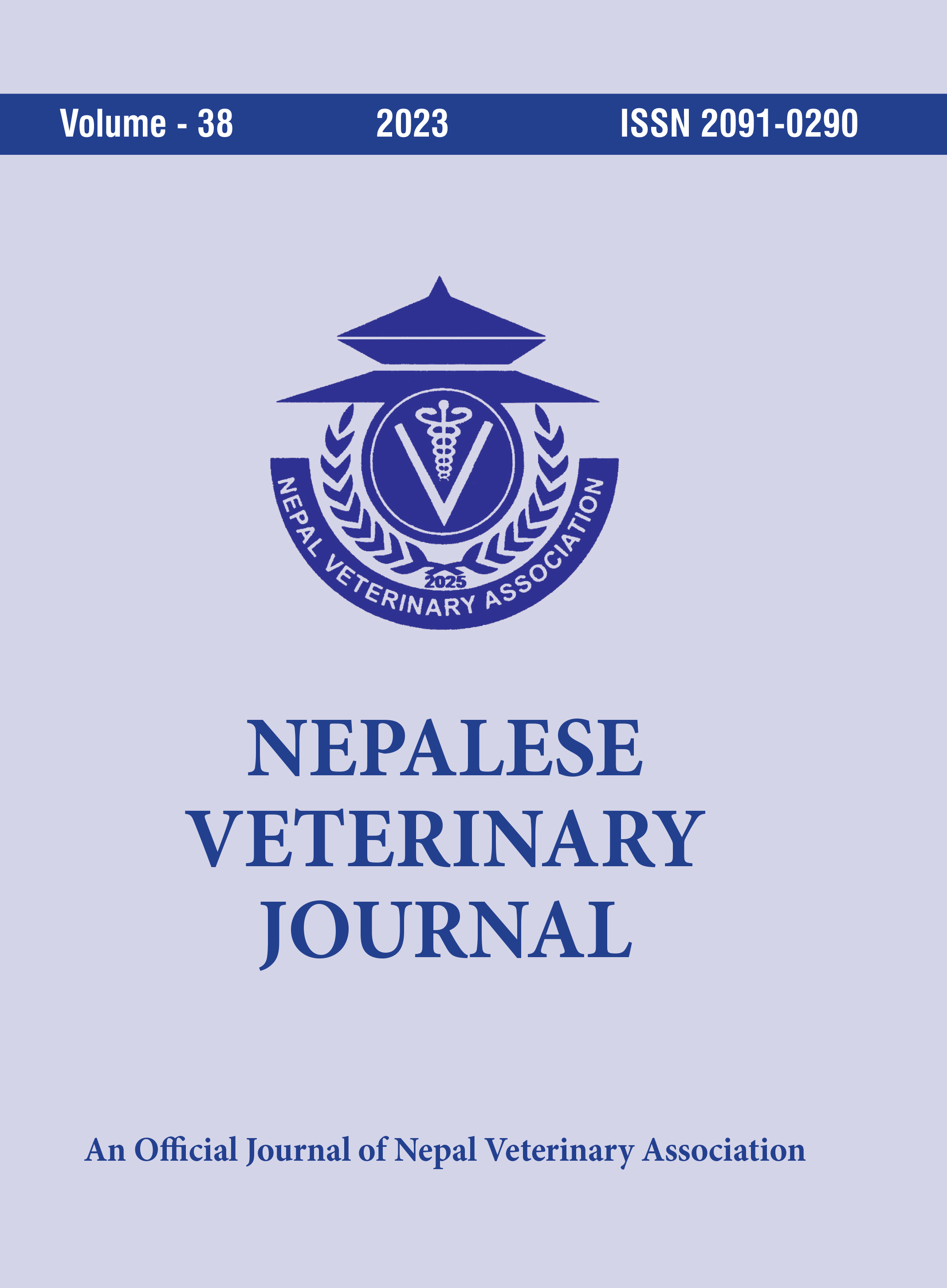Molecular Detection of Anaplasma in Cattle of Morang, Rupandehi and Surkhet districts of Nepal
DOI:
https://doi.org/10.3126/nvj.v38i1.55842Keywords:
Haemoparasites, Polymerase Chain Reaction, Tick Borne DiseaseAbstract
Anaplasma, a vector transmitted rickettial parasite, infects blood cells of bovine causing asymptomatic to clinical bovine anaplasmosis. This study was conducted to estimate the prevalence of Anaplasma sp. in blood samples of dairy cattle in Morang, Rupandehi, and Surkhet districts of Nepal and to determine the risk factors and biochemical alterations of the respective animal. In total, 120 blood samples (40 from each district) were randomly collected from dairy cattle. The blood smears were prepared and fixed with 10% methanol on the field, and fresh blood was collected in EDTA tubes for molecular analysis and in clot activating tubes to yield serum for biochemical tests. 9 (7.5%) blood samples had produced the 577 base pairs of DNA fragments specific for the 16S rRNA gene of Anaplasma sp. by PCR amplification. 5 (4.16%) blood samples in the smear were found positive by microscopic examination. Serum biochemical profile was not different between Anaplasma sp. positive cattle and negative cattle (p > 0.05). The prevalence rate between Jersey and Holstein Friesian crossbred was also not different (p>0.05). There was a higher prevalence among cattle aged more than 2 years compared to cattle less than 2 years (p<0.05) indicating older cattle were more susceptible to the Anaplasma infection. In conclusion, serum biochemical alterations and risk factors should be considered in order to achieve prognosis and initiation of an appropriate therapeutic regimen for a favorable outcome of the tick-borne haemoparasitic diseases along with molecular detection for improved detection.
Downloads
Downloads
Published
How to Cite
Issue
Section
License
© Nepal Veterinary Association




